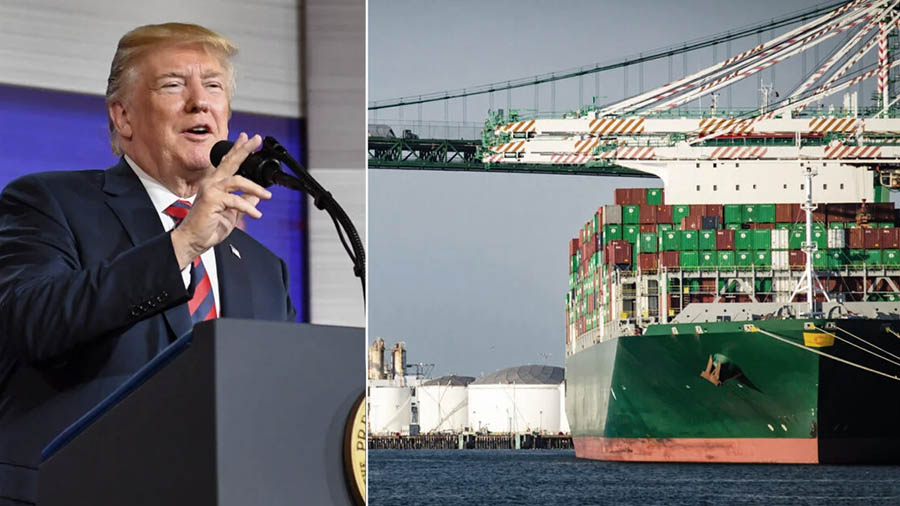Executive leadership teams are undoubtedly huddled behind closed doors this morning as the Trump Administration dropped a bomb on the public and consumer markets, imposing reciprocal tariffs across a broad range of countries. While many, including SGB Media, expected China to take the brunt of the pain of new tariffs, we were wrong to assume such a limited impact or the issue’s reach.
At issue for many in the active lifestyle market, including sporting goods, footwear, apparel, and outdoor, is the impact on goods sourced in Vietnam after many companies invested considerable time and capital in moving production from China — the clear target for tariffs for both Trump and Biden — to Vietnam, which had no tariff issues.
But that all changed yesterday, April 2, when Trump dropped an additional 46 percent tariff on goods arriving in the U.S. from Vietnam. The percentage looks ridiculous until we see that Vietnam imposes 90 percent tariffs and taxes on U.S. goods entering that market. That figure appears to open to debate as the “Tariffs Charged to the U.S.A.” data in the chart below is based on a formula created by the Trump Administration that is based in part on each country’s trade surplus with the U.S. Some are arguing that the actual tariff that Vietnam imposes on U.S. goods in less than 10 percent.
Vietnam was the beneficiary of the last tariff (or trade) war after Trump 1.0 imposed higher tariffs on goods made in China, most of which remain in place or increased under Biden. Some companies now have as much as 50 percent of their production in Vietnam, up from 0 percent to perhaps 15 percent when Obama left office.
Stock prices for many companies in the active lifestyle market plunged overnight on Wednesday and into Thursday morning as analysts and investors headed for the doors as all the assurances of limited exposure to the tariff impact received from companies reporting financials over the last 60 days.
As recently as this past week, the market heard companies (think Lululemon) explain that China was only 10 percent to 15 percent of their sourcing today as most moved production to Vietnam.
RBC Capital Markets analyst Piral Dadhania said in a note to clients that the tariffs laid out in a press conference late Wednesday afternoon are harsher than expected, especially for Southeast Asian countries with higher exposure to sporting goods.
UBS analysts said the duties will concern many brands that have recently shifted manufacturing from China to Vietnam. “The growing role of the latter in footwear manufacturing as well as its meaningful contribution to U.S. footwear imports mean the tariffs represent a headwind to the sector that companies might not be able to fully offset,” the firm wrote in a Thursday morning note.
CNBC estimates that Vietnam is responsible for $156 billion in overall production destined for the U.S. market.
The issue is not isolated to Vietnam either. They just happened to be the biggest beneficiary.
The other tariffs mentioned include 49 percent on Cambodia, 36 percent on Thailand, 37 percent on Bangladesh, 32 percent on Indonesia, 48 percent on Laos, and 34 percent additional tariffs on China — on top of the already announced 20 percent — for a total of 54 percent.
Other key trading partners for the U.S. that are subject to tariffs include Switzerland, the EU and the UK. The U.S. paused tariff increases on Mexico and Canada as the three neighbors negotiated a go-forward plan.
Still, UBS also noted that only a portion of the cost increases would likely be passed through to consumers. It reported to fully mitigate the hit to Vietnam, companies would have to increase prices by between 10 percent and 12 percent.
Reuters said that in addition to active lifestyle market stocks, fast-fashion retailers like H&M, which primarily sources from China and Bangladesh, and Zara owner Inditex were also hit.
Reuters also reported that “the new tariffs would increase the average U.S. import tariff rate on apparel from 14.5 percent in 2024 to 30.6 percent, according to calculations by Sheng Lu, professor of fashion and apparel studies at the University of Delaware.”
“The April 2 tariffs seem purpose-built to hobble the apparel industry,“ said Dylan Carden, an analyst at William Blair in Chicago.
Jefferies analysts noted that the U.S. imported more than $15 billion in textiles and garments from Vietnam in 2024, roughly about 10 percent of Vietnam’s total U.S. exports.
Nike reportedly produced ~50 percent of its footwear and ~28 percent of its apparel in Vietnam in its 2024 financial year ended May 31, 2024, according to the retailer’s latest annual report. Adidas relied on Vietnam for 39 percent of its footwear and 18 percent of its apparel last year ended December 31. Crocs is even more exposed, with over 50 percent of its production in Vietnam for the past three consecutive years, the company said in a recent annual filing. Lululemon made 40 percent of its products in Vietnam in 2024 and another 17 percent in Cambodia.
Athleta parent Gap, Inc. reported that 27 percent of its manufacturing came from Vietnam in 2024, and 19 percent from Indonesia.
Image courtesy Freight Waves

















